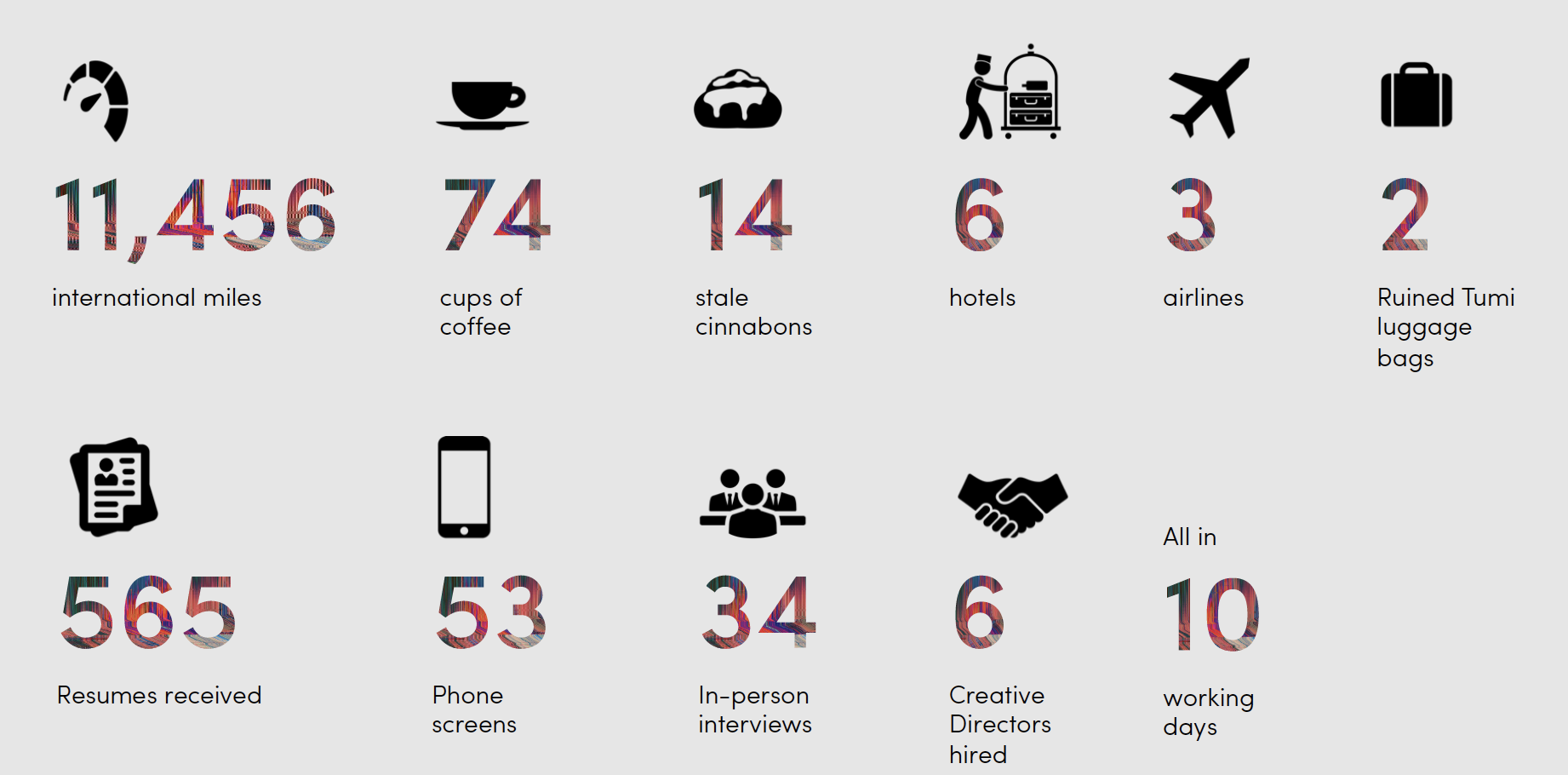Recently, my colleagues and I scoured six North American cities and hired as many World-Class Creative Directors in the absurdly short time of ten working days. How we were able to set this goal, make gut decisions and work at pace to achieve this—well that’s a topic for a future missive.
For now, here’s some hard-won wisdom we gleaned from this exhaustive process to help anyone looking to land a senior level creative leadership position interview better—and ultimately snag your dream position.
Because after meeting so many wonderful, talented, fascinating creative leaders in such a short period of time, I couldn’t help but realize that being wonderful, talented, and fascinating wasn’t enough.
Not anymore.
As the world of business and technology becomes more and more complex, creative leaders must evolve to keep pace. The folks that made it through our gauntlet and snagged a spot on our team were incredibly diverse in thought and experience, but had very specific traits in common. Digest them. Learn from them. And may the force be with you on this wonderful, chaotic, ever changing journey called your creative career.
They were precise.
Have you ever sat in on a quarterly conference call when a CEO missed an earnings estimate? Spoken to an engineer who’s product failed? Gone over budget by $9,345 in post-production and had to go hat-in-hand to your CMO? Then you already know that precision in business isn’t just a nice-to-have.
It’s an absolute necessity.
So prove you can think, listen, communicate and manage with precision. Prove you can be the cold-forged samurai sword that cuts through the Gordian Knot of confusion.
And that includes telling us the Story of You.
Because if you can’t tell us your own story in 45 minutes with precision, how can we expect you to be precise at pace and under pressure?
They ran toward the difficult.
Do you run away from challenging briefs to grab that pro-bono opportunity destined to (at least in your own mind) deliver fame, fortune and shiny statues? Or do you put your Big Boy/Girl pants on and run toward the big, gnarly real world problems?
Guess who’s more likely to get the job?
They were authentic.
I’ve met introverts who are stone cold killers and extroverts who fold under pressure like a squeaky lawn chair. There’s plenty of room for successful people of all personality types. Just make sure you master your own personal style and make it work for you.
They spoke to their process, not just their outputs.
We all have our own unique conceptual processes, leadership styles and management techniques. Help me understand yours. The point isn’t whether you’re right or wrong (you can’t be) but rather that your process is thoughtful, repeatable and uniquely yours.
“It just comes to me” isn’t a process, nor does it give me the confidence you can do it again and again—under real-world pressure.
Your ‘how’ is just as important as your ‘what’.
They knew their contributions to their work—and never exaggerated them.
Creativity in business is a team sport. Planners, account people, technologists, even clients all play a vital ole in building successful creative solutions.
We all stand on each other’s shoulders.
That said, as a senior creative leader, the only work you should ever reference in an interview or feature on your site is work you had an INTEGRAL role in. If your participation was tangential, fleeting or in any way not critical to the process or outcome, take it off your site.
Leaders with integrity don’t take credit for work or awards they didn’t meaningfully contribute to. Besides, if you present yourself in an inauthentic way, you will ALWAYS be found out.
Don’t be that person.
They proved they could do less with more.
They didn’t need multi-million dollar budgets to showcase their creative and managerial brilliance. They were entrepreneurial. Scrappy. Resourceful. And they were hired.
They exhibited empathy.
You simply cannot build, manage and grow successful creative teams without empathy. Understanding your team’s challenges, stresses and aspirations and helping them navigate them isn’t just mission critical.
It’s called being a good human being.




